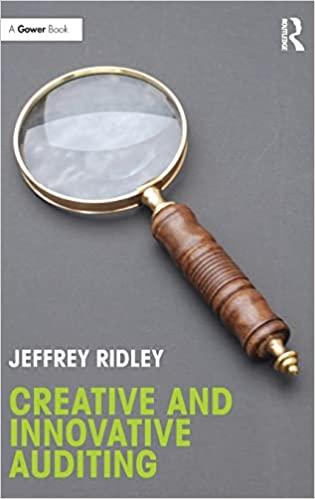Question
1. The citation, Reg. 1.62-1T indicates: a. that this is a final income tax regulation, involving Code Section 162. b. that this is a temporary
1. The citation, Reg. 1.62-1T indicates: a. that this is a final income tax regulation, involving Code Section 162. b. that this is a temporary income tax regulation involving Code Sec. 62. c. that this is a temporary estate tax regulation involving Code Sec. 62. d. None of the above. 2. The following are trial courts from which a taxpayer may choose in initiating his or her tax lawsuit: a. The Supreme Court. b. The Tax Court. c. The Court of Appeals for the 6th Circuit. d. The Court of Federal Claims. e. Two of the above. 3. The following characterize lawsuits which are heard in regular Tax Court: a. The request for hearing must be filed with the Court within 120 days of receiving a statutory notice of deficiency. b. The taxpayer must pay the deficiency up-front and sue for a refund. c. A taxpayer's case may be heard by one judge or the entire panel en banc. d. The taxpayer has a right to a jury trial. 4. A regular Tax Court case is appealed to: a. the Court of Appeals for the Circuit in which the taxpayer resides. b. the Court of Appeals for the Federal Circuit. c. the Circuit Court of appeals with the most favorable precedent. d. None of the above. 5. Pursuant to the Golsen Rule: a. the Tax Court must follow all Circuit Court of Appeals decisions. b. the Tax Court must follow decisions of the Court of Appeals for the Circuit in which the taxpayer's appeal may be filed. c. the Tax Court must obtain a ruling from the Supreme Court of the state where the taxpayer resides if there is no Federal Circuit Court of Appeals decision on the matter. d. Two of the above. e. None of the above. 6. An example of a trial court of general jurisdiction that does not specialize in any particular type of law is: a. the Tax Court. b. Court of Appeals for the Federal Circuit. c. the Supreme Court. d. a United States District Court. 7. The following is true of a Circuit Court of Appeals: a. The taxpayer who originated a claim in a U.S. District Court may appeal the decision to any Circuit Court of Appeals the taxpayer chooses. b. The Court of Appeals may affirm the lower court decision, reverse the decision or retry the facts on appeal. c. The Circuit Courts of Appeal follow stare decisis and are bound by their previous decisions, but they are not required to follow the decisions of other Circuits. d. All of the above. 8. The United States Supreme Court will grant a writ of certiorari in a tax case if: a. it involves tax issues of significant importance involving existing law, but which require interpretation. b. it involves a provision of the of tax law which has been the subject of conflicting interpretation by the Circuit Courts of Appeal. c. Both a and b. d. Neither a nor b. 9. The citation, Kean v. Comm'r, 407 F.3d 186 (CA3, 2005), 2005-1 USTC 50,397, indicates that this case: a. was officially reported in the 3rd volume of the Federal Reporter on Page 407. b. was unofficially reported in CCH's United States Tax Cases in Volume 2005-1 at paragraph 50,397. c. was officially reported in Volume 407 of the 3rd printing of the Federal Reporter on Page 186. d. Both a and b. e. Both b and c. 10. The process of analyzing the primary authority uncovered by tax research includes the following: a. Reading only annotations and editorial information included in tax services. b. Determining whether a primary authority is relevant, that is, sufficiently factually similar to the case of the taxpayer to be of use. c. Determining if the primary authority found is still good law through the use of a Citator. d. Both a and b. e. Both b and c. please provide short expl. with your answer.Tk
Step by Step Solution
There are 3 Steps involved in it
Step: 1

Get Instant Access to Expert-Tailored Solutions
See step-by-step solutions with expert insights and AI powered tools for academic success
Step: 2

Step: 3

Ace Your Homework with AI
Get the answers you need in no time with our AI-driven, step-by-step assistance
Get Started


